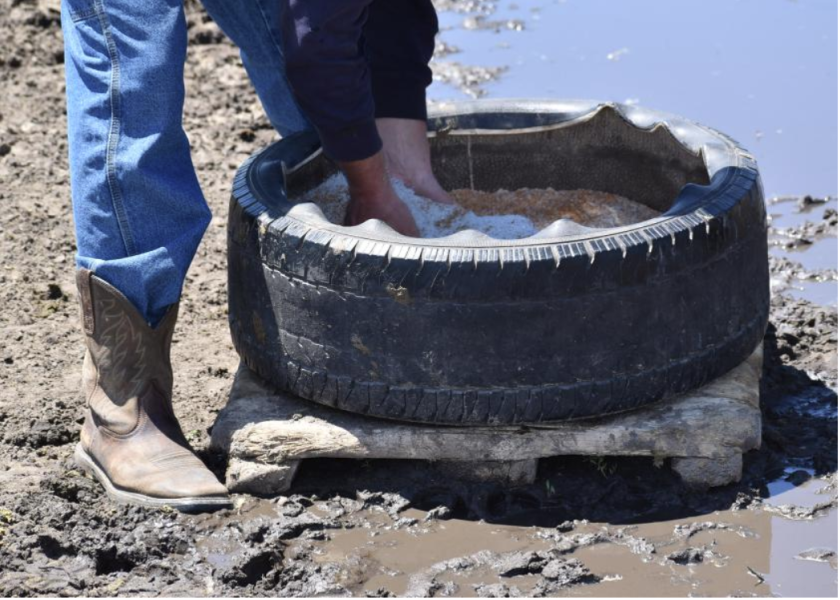Determining proper mineral supplementation merits more thought than simply going to the feed store, grabbing a few bags or a pallet of the mineral they have on hand and throwing it in a lick tub.
Contributing to stronger immune systems, reproductive performance and calf weight gain, providing the proper vitamin and mineral nutrition is widely beneficial to the herd.
Ohio State University (OSU) Extension reports beef cattle mineral requirements are as follows:
“As a rule of thumb, micro-minerals, or trace minerals, are required in amounts less than 1 gram per day compared to macro-minerals, which are often required at levels greater than 1 gram per head per day,” an OSU report explains.
Considerations for Choosing the Right Mineral Supplementation
As grazing or forage-based livestock, cattle present a few challenges when it comes to mineral intake, and mineral intake can vary from day to day and week to week.
“Cattle are getting a majority of their nutrition from the forage. [Minerals] even vary on the same piece of ground over time, depending on the maturity of the grass. So, green growing grass has different levels of both macro- and trace minerals than dormant forages,” says Bob Larson, DVM, professor of clinical sciences at Kansas State University.
Different forage species may also have different mineral concentrations. Specifically, legumes can provide a slightly higher concentration of trace minerals.
Although availability of forage mineral varies with the specific mineral, soil mineral concentrations and forage maturity and weathering, most data indicate that minerals of forage origin are between 50% and 90% available to the ruminant animal, with the exception of manganese, which is considerably lower, OSU notes.
Additionally, an OSU experiment found that grazing cattle selectively consumed forage with higher quality, including sodium (Na), phosphorus (P), zinc (Zn) and cobalt (Co), over hand-clippings of the same pasture.
Lastly, the demand for minerals in cattle diets also varies depending on the age and the stage of production. For instance, lactating cows have a much higher demand than a non-lactating cow.
In summary, when it comes to choosing the best mineral for your cattle, consider the following:
• Forage species (grasses, legumes, etc.)
• Forage quality and maturity (growing vs. dormant)
• Soil type and pH (available minerals)
• Animal requirements (age, stage of production)
Inorganic Vs. Organic Minerals
While both inorganic and organic minerals can be found on the market, producers may wonder what’s the difference.
Inorganic minerals are often produced as byproducts of other industries and are not necessarily presented in a way that is similar to how the mineral would be found in nature. Meanwhile, organic minerals are created in a way makes them more nature-like.
“We typically see better performance when we supplement our animals with the organic form of trace minerals. It’s much more representative of the way that zinc or copper or manganese would be in the plant structure,” explains Laurentia Van Rensburg, technical mineral manager for Alltech
OSU also notes that organic mineral sources have improved growth and reproductive performance in some studies where high levels of performance (embryo transfer or response to estrous synchronization and artificial insemination) were expected.
Location, Location, Location
Location plays a large role in the needs of minerals for cattle. As previously mentioned, soil type and soil pH play a part in what minerals might be taken up by the plant and available to the grazers through the forage. Water resources can also play a role in the minerals available for cattle to consume.
Larson encourages producers to reach out to local experts, specifically nutritionists, veterinarians and agronomists, to help determine what minerals are available and those that may need supplementation based on more location-specific data.
More Is Not Always Better
The goal should be to meet the needs of the animal as close as possible. Over-supplementing might cause a negative impact, called mineral antagonism, where excess minerals decrease or block absorption of other nutrients. For instance, iron and molybdenum are both antagonists for copper.
When considering mineral supplementation, it’s important to not only try to prevent deficiencies, but to provide the proper nutrients for optimum performance.
Ways of mineral supplementation can vary, including free-choice loose mineral mixes, trace mineral blocks and fortified energy or protein supplements. Choose a supplementation strategy that is best for your operation and the time and labor resources available. Additionally, revisit your mineral supplementation strategy frequently to ensure your cattle’s needs are met throughout the year.
SOURCE: Bovine Veterinarian, Paige Carlson November 17, 2022









